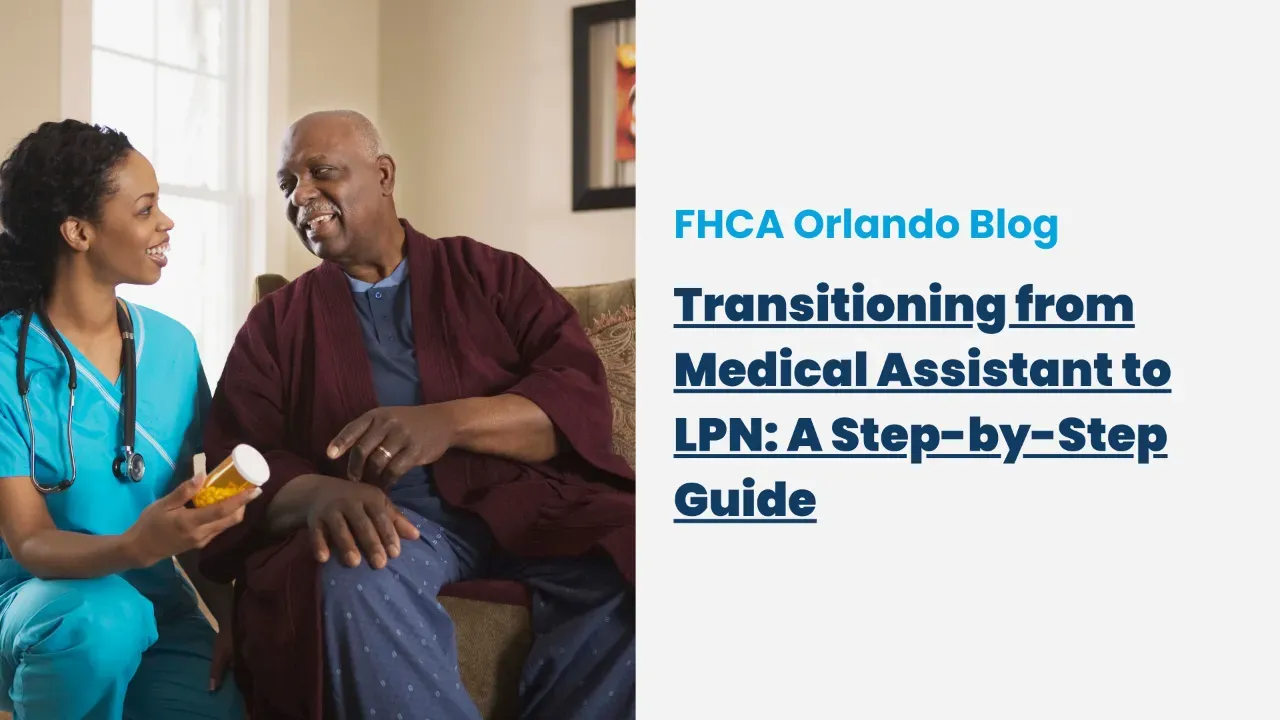Transitioning from Medical Assistant to LPN: A Step-by-Step Guide
May 29, 2024
Medical assistants interested in patient care or transitioning into nursing can become Licensed Practical Nurses (LPNs). While prior healthcare experience may be beneficial, aspiring LPNs must complete a one-year LPN degree program and meet state licensing requirements.
Table of Contents
- Can medical assistants become LPNs?
- Comparing MA and LPN Roles
- Steps to become an LPN from medical assistant
- How long does it take to become an LPN from a medical assistant?
- Things to consider before transitioning from LPN to medical assistant
Can medical assistants become LPNs?
Medical assistants can become Licensed Practical Nurses (LPNs) by completing a one-year LPN degree program and meeting their state licensing requirements. This transition allows medical assistants interested in patient care to advance their careers within the nursing field.
For more information on alternative jobs for medical assistants, you can explore our detailed guide and more in the FHCA page.
Comparing MA and LPN Roles
|
Medical Assistant (MA) |
Licensed Practical Nurse (LPN) |
|
|
Responsibilities |
- Administrative tasks (scheduling, billing) |
- Direct patient care (wound care, injections) |
|
- Basic clinical tasks (vitals, patient prep) |
- Monitoring patient health |
|
|
- Assisting physicians during exams |
- Administering medications |
|
|
- Managing medical records |
- Collaborating with RNs and physicians |
|
|
Education |
- Certificate or diploma from an MA program |
- Diploma from an accredited LPN program |
|
- Typically 9 months to 1 year of study |
- Typically 12 to 18 months of study |
|
|
Certification |
- Optional: CMA (Certified Medical Assistant) |
- Required: Passing the NCLEX-PN exam |
|
Average Salary |
- $34,000 to $40,000 per year |
- $48,000 to $55,000 per year |
|
Work Environment |
- Primarily in outpatient clinics, physician’s offices |
- Hospitals, nursing homes, and long-term care facilities |
|
- Standard working hours (Monday-Friday) |
- May require shift work (nights, weekends) |
|
|
Scope of Practice |
- Limited to basic patient care and admin duties |
- Broader scope, including more complex medical care |
|
Job Outlook |
- Growing demand in ambulatory care |
- High demand across various healthcare settings |
|
Career Advancement |
- Limited without further education |
- Opportunities for specialization and leadership roles |
Steps to become an LPN from medical assistant
Transitioning from a medical assistant to a Licensed Practical Nurse (LPN) can be a rewarding career move. This journey involves specific steps and educational requirements to ensure a smooth transition into the nursing field.
1. Complete a medical assistant program
The first step in becoming an LPN from a medical assistant is to complete a medical assistant program These programs provide foundational knowledge and skills in healthcare that can be valuable for a nursing career.

2. Enroll in an accredited LPN program
After completing a medical assistant program, the next step is to enroll in an accredited Licensed Practical Nurse (LPN) program. These programs provide specialized training in nursing principles, patient care, and clinical skills necessary for LPN practice.
3. Pass the NCLEX-PN exam
Upon completing the LPN program, aspiring LPNs must pass the National Council Licensure Examination for Practical Nurses (NCLEX-PN). This exam assesses the candidate's knowledge and competency to practice safely and effectively as an LPN.
4. Complete clinical hour requirements
LPN programs typically include clinical rotations to provide hands-on experience in healthcare settings. Completing these clinical hours requires graduation and licensure as an LPN.
5. Continue professional development
LPNs should engage in continuous professional development to maintain licensure and stay updated with the latest nursing practices. This may include attending workshops, pursuing advanced certifications, or participating in ongoing education programs.
How long does it take to become an LPN from a medical assistant?
The timeline to transition from a medical assistant to a Licensed Practical Nurse (LPN) typically spans around 2 to 4 years. This includes completing a medical assistant program, which can take 9 months to 2 years, followed by enrolling in an accredited LPN program lasting 12 to 18 months.
After graduation, aspiring LPNs need to pass the NCLEX-PN exam, fulfill clinical hour requirements, and engage in ongoing professional development.
Things to consider before transitioning from LPN to medical assistant
Before transitioning from an LPN to a medical assistant, it's essential to consider key factors. These include understanding the differences in scope of practice and job responsibilities between the two roles. Evaluate the educational requirements and any additional training needed for medical assisting.
Explore the various places medical assistants can work to find the right fit for your career goals. Additionally, consider the potential for career advancement and growth opportunities in both fields to make an informed decision about your career path in healthcare.








